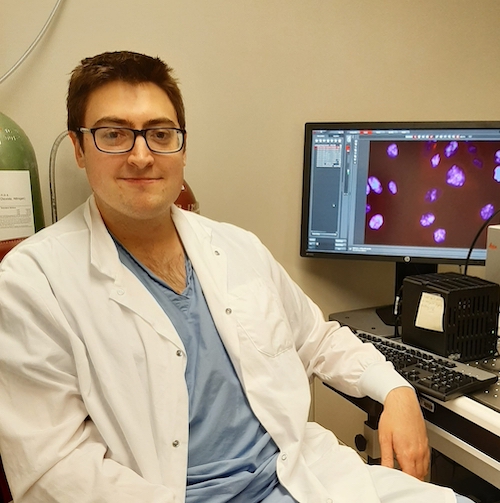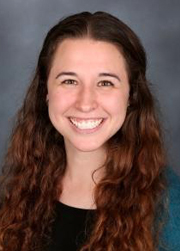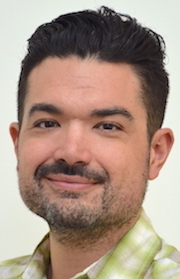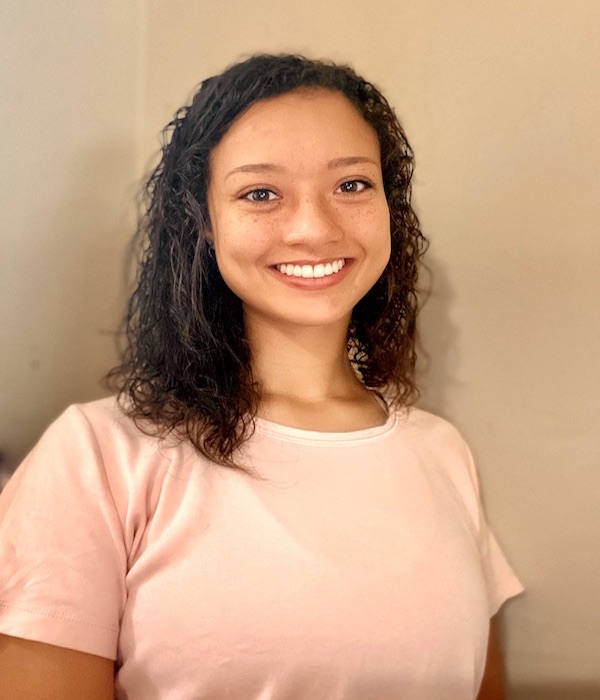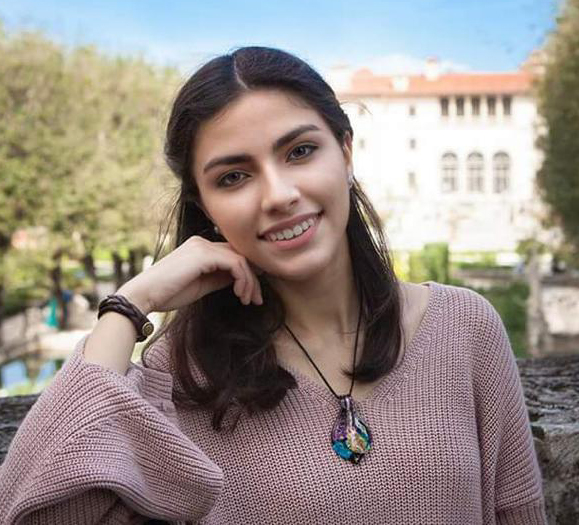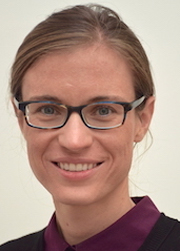Student Profile
Madison Ahmad

Email: ahmad217@umn.edu
Class of: 2020
Degrees received: Michigan State University, Biology Major, B.S., 2017
Wayne State University, Microbiology and Immunology Major, Masters of Science, 2019
Research: My thesis is focused on genome integrity and ways in which cells handle lesions in their DNA. Treating bacteria with ciprofloxacin, which binds to gyrase, results in the formation of a covalently crosslinked DNA-gyrase complex that is no longer able to dissociate from the DNA. This complex causes stalling of replication/transcription, and its removal leads double stranded DNA breaks. Preliminary data from the Lang Lab showed that ErmB decreased sensitivity to ciprofloxacin. ErmB methylates the ribosome and, thus, provides resistance to erythromycin. To date, tehre have been no links between macrolide resistance and fluroquinolone resistance. Our goal is to identify how alterations to the ribosome allow the cell to overcome damage/stalling on the DNA.
Alison Barkhymer
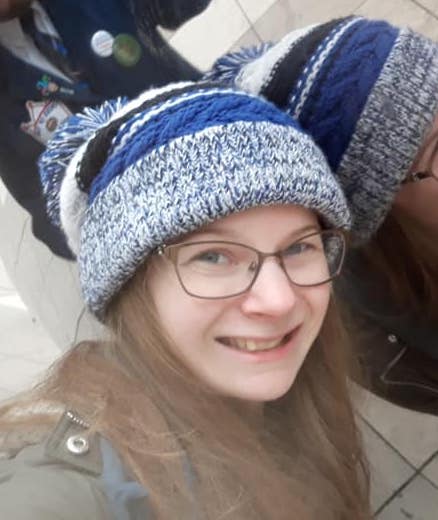
Degree received: Minnesota State University, Moorhead, Cellular and Molecular Biology major, B.S., 2019
Research: Influenza is a virus that can infect many species, but in order to cross species barriers it has to overcome a number of obstacles. One of these obstacles is the host antiviral immunity. Interferon-stimulated genes (ISGs) are expressed in response to viral infection and make up a large component of the antiviral immune response. I am investigating the function of interferon-stimulated genes in the cross-species transmission barrier of influenza.
Carlo Castillo

Degree received: The Ohio State University, Chemistry major, B.S., 2017
Research: My work will focus on applying co-culture techniques to study host-pathogen interactions in a variety of settings. As a member of Ryan Hunter's Lab I studied how airway epithelial cells responded to infection by Pseudomonas aeruginosa under anaerobic conditions. I applied bulk RNA sequencing to study how P. aeruginosa virulence and the accompanying host response was affected by the presence and absence of oxygen, as well the impact of the normal versus cystic fibrosis epithelial environment. Going forward in the Willett Lab, I will be applying my experience with co-culture systems to investigate key genes utilized by Enterococcus faecalis to colonize the gastrointestinal tract as well as key virulence factors used when it adopts a pathogenic lifestyle.
Taylor Crooks
Degree received: University of Illinois at Urbana-Champaign, Molecular and Cellular Biology, B.S., 2018
Research: The emergence of drug resistance in Mycobacterium tuberculosis (Mtb), the causative agent of tuberculosis, presents a threat to both developed and impoverished countries around the world. My work is largely focused on characterizing antitubercular drug activity in Mtb, more specifically, pyrazinamide and pyrazinamide analogs. While pyrazinamide is an important first line therapeutic in tuberculosis treatment, its exact mechanism is unclear. My research employs various in vitro techniques to study changes of fitness in drugs using genetics-based approaches such as transposon mutagenesis and targeted knockouts. The goal of my research is to elucidate the molecular mechanisms of an effective, yet uncharacterized, pyrazinamide analog in the hopes of better understanding pyrazinamide/pyrazinamide analog activity in Mtb.
Eduardo Cruz
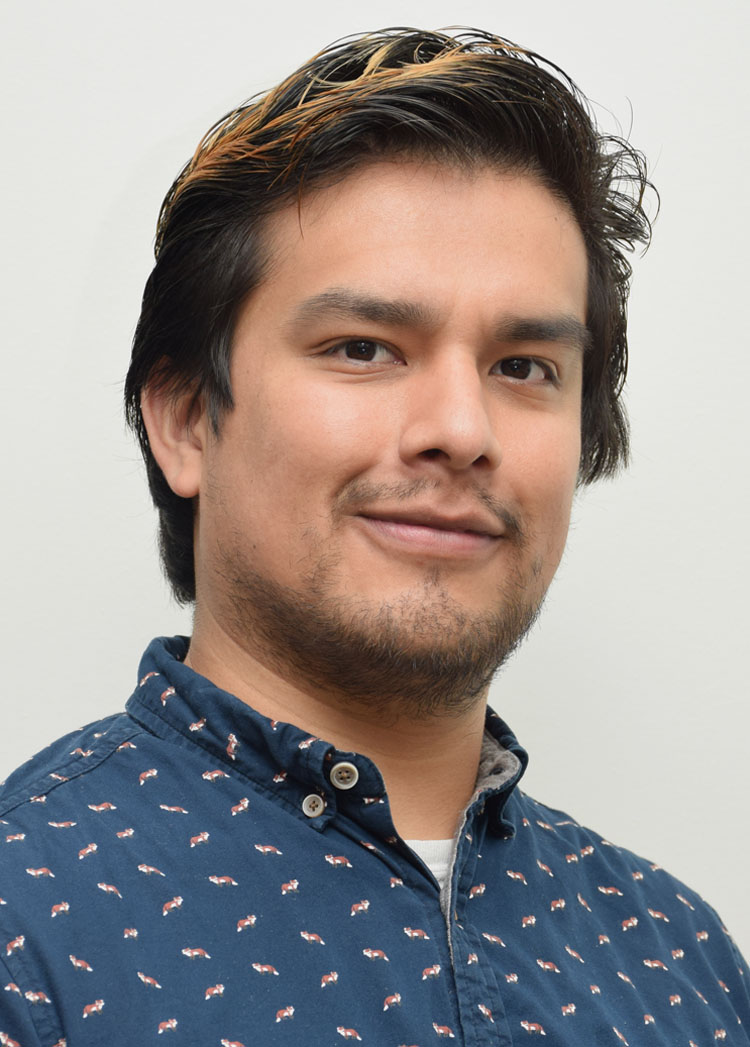
Email: cruzh004@umn.edu
Advisor: Ingunn Stromnes
Year entered: 2021
Ungergraduate Institution: University of California Irvine
Research:
Pancreatic ductal adenocarcinoma (PDA) is an aggressive cancer that has proven difficult to treat with immune checkpoint blockade therapy which fails to fully reinvigorate T cells at the tumor site. There is increasing evidence that chronic antigen gives rise to highly proliferative memory T cell subsets housed in peripheral lymphoid tissues, which may serve as a fresh source of effector T cells upon successful checkpoint blockade. My research is focused on understanding this memory-to-effector T cell differentiation in PDA, with the hope of identifying molecular signals that may be exploited to overcome T cell exhaustion and improve therapies. To this end, I am also hoping to identify an MHC class II restricted neoepitope in our PDA animal model to improve our understanding of T cell dynamics.
Taylor DePauw

Email: depa0049@umn.edu
Advisor: Steve Jameson
Year entered: 2021
Ungergraduate Institution: University of Wisconsin Stout
Research:
Looking at the role of KLF2 in T cell trafficking during infection and tumor burden.
Jenna (Johnson) Dick
Phillip Dougherty
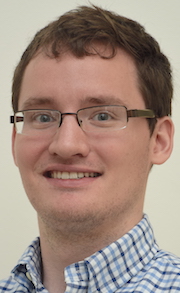
Degrees received: Rensselaer Polytechnic Institute
Research:
Phillip will be investigating the use of induced pluripotent stem cells (iPSC) in generating induced regulatory T cells (Tregs) as a cellular therapy for Graft Versus Host Disease. This process involves genetically modifying iPSC to increase their stability and propensity to differentiate into functioning Tregs and verifying the generated Tregs using genomic, proteomic, metabolomic and functional
assays.
Alexis Elfstrum
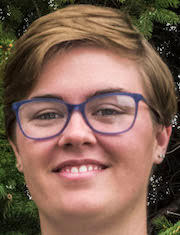
Email: elfst022@umn.edu
Thesis Advisor: Kaylee Schwertfeger
Year entered: 2019
Degrees received: University of Minnesota, Twin Cities
Research:
The lymphatic vessel endothelial receptor (Lyve-1) is most well known as marker for lymphatic vessels. The Schwertfeger lab has now identified a population of macrophages in breast tumors that express Lyve-1. The role of Lyve-1+ macrophages in breast cancer is unknown; however, Lyve-1 is anti-tumorigenic in melanoma. I am seeking to understand the role of Lyve-1+ macrophages in breast cancer using mouse models and in vitro modeling experiments.
Jacob Hildebrand

Email: hilde236@umn.edu
Thesis Advisor: Sara Hamilton Hart
Year entered: 2019
Degrees received: University of Wisconsin, Stout
Research:
Cerebral malaria is a major disease affecting human health, resulting from extensive neuroinflammation during Plasmodium infections. The primary drivers of immunopathology during severe malaria are CD8 T cells. These cells traffic to the brain and disrupt the blood brain barrier, leading to extensive edema. Current malaria treatments focus on limiting parasite dynamics, but there are few therapies that modulate the immune system in this disease. One therapeutic approach involves stimulating the immune system to take on a more immunosuppressive and protective phenotype. Recent research has defined a role for natural killer cells to dampen the immune response. Our lab seeks to define mechanisms in which natural killer cells protect the host by limiting overt T cell responses during infection. These discoveries can be used to develop new treatments that target immunopathology during infection and autoimmune disease.
David Hsu
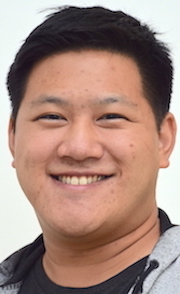
Degrees received: University of California, Davis
Research:
The Soudan Underground Mine in the Vermillion Range in northern Minnesota provides a unique opportunity to study the deep terrestrial biosphere that has been relatively unaffected by photosynthetic activities. The lowest level of the Soudan Underground Mine, which reach a depth of 713 meters, has access to 2.7-billion-year-old banded iron deposits with brine waters that are metal-rich, anoxic, and devoid of detectable organic carbon. Studying how microbes survive in the mine could help to understand the adaptations required to make a living in such unique conditions and how the microbial community, in turn, affects the geochemistry of the mine. The goal of my research is to enrich, isolate, and identify the microorganism that are playing a role in the metabolic cycling in the mine. Additionally, I will be studying the cytochrome-carrying prophage region of the Deltaproteobacterium Desulfuromonas soudanensis strain WTL, that was previously enriched from electrodes in the mine, to identify the role of horizontal gene transfer on the proliferation of cytochrome diversity in metal-reducing bacteria.
Ri-Sheng (Rex) Huang
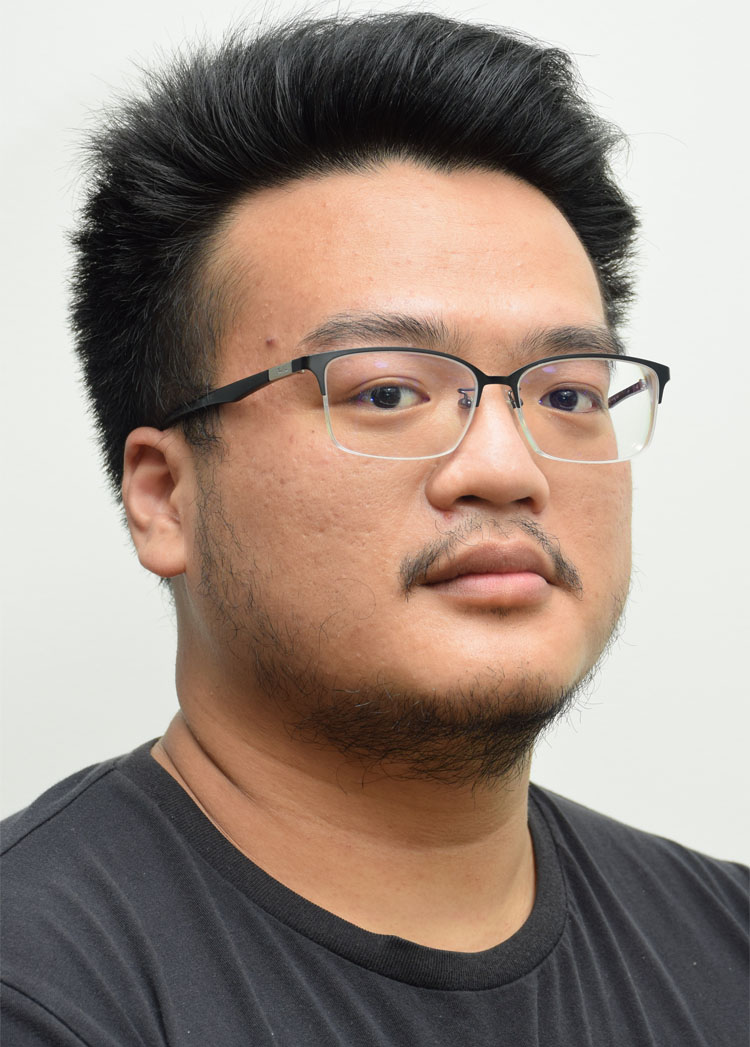
Email: huan2380@umn.edu
Advisor: Branden Moriarity
Year entered: 2021
Undergraduate Institution: National Taiwan University
Research:
Robert Hullsiek
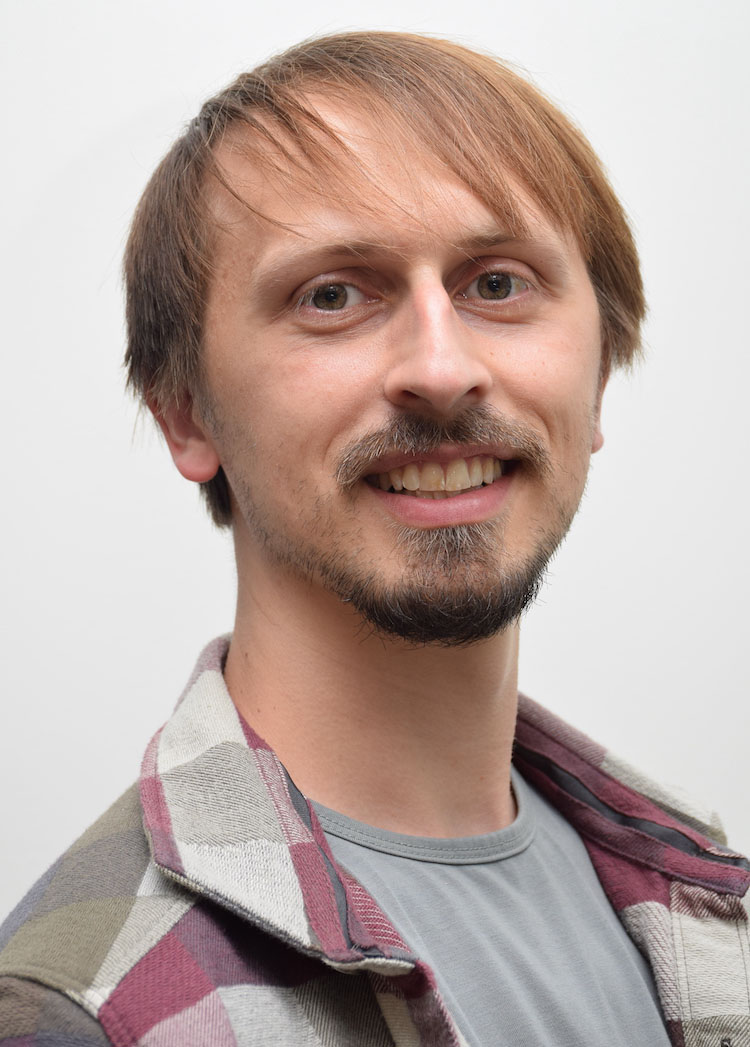
Email: hulls015@umn.edu
Advisor: Bruce Walcheck
Year entered: 2021
Undergraduate Institution: University of Minnesota
Research:
Zak Hying
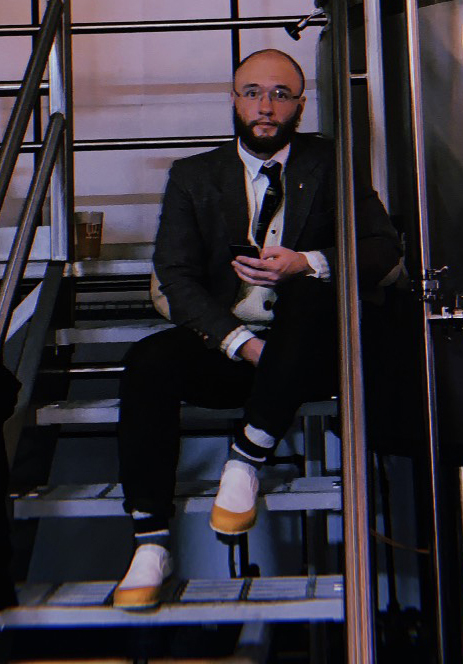
Degrees received: University of Wisconsin Milwaukee
Research: The epiphytic bacterium Methylorubrum extroquens is able to grow on reduced one carbon compounds, such as methanol. Doing so, however, presents a metabolic paradox. Methanol, and other one carbon compounds, are metabolized via a high flux oxidative pathway that produces formaldehyde as an obligate intermediate meaning formaldehyde is both a central metabolite and a potent stressor. Consequently, methylotrophs experience, and cope with, high intracellular concentrations of formaldehyde. My PhD research seeks to combine modern genetic techniques and classical bacteriological methodologies to focus on understanding and characterizing the regulatory mechanisms that allow M. extorquens to mount a formaldehyde specific stress response and maintain cellular homeostasis despite the presence of elevated formaldehyde.
Julia Jackson
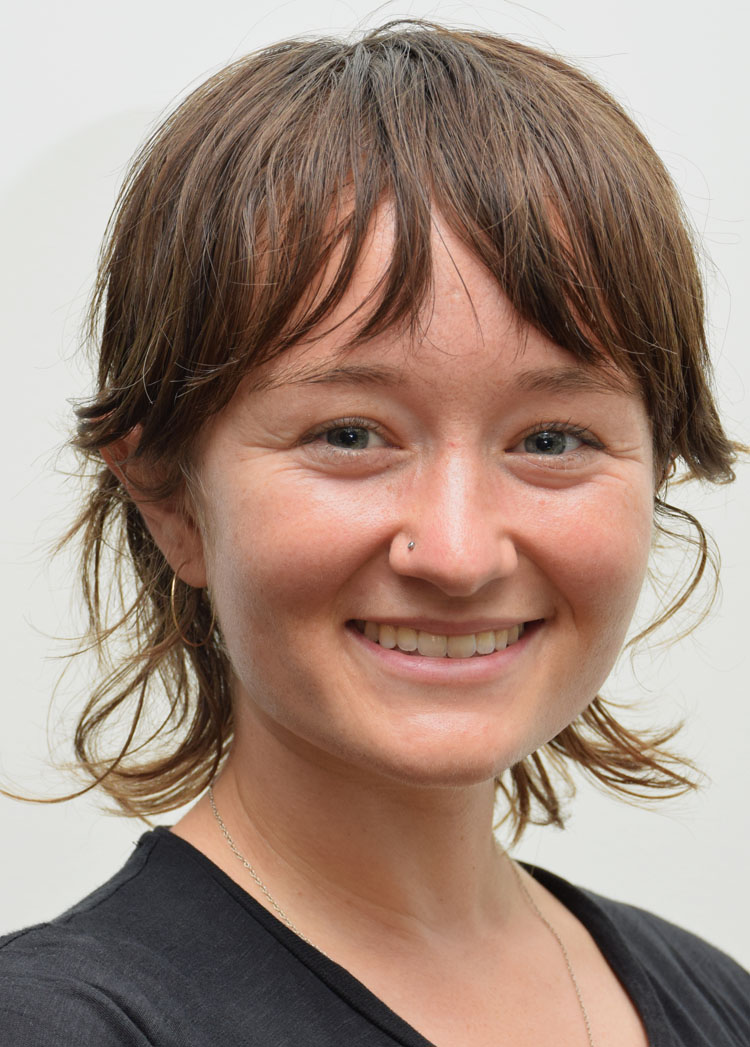
Email: jack1850@umn.edu
Admisor: Dave Masopust
Year entered: 2021
Undergraduate Institution: Univ. of California Berkeley
Research:
Sookyong Joo
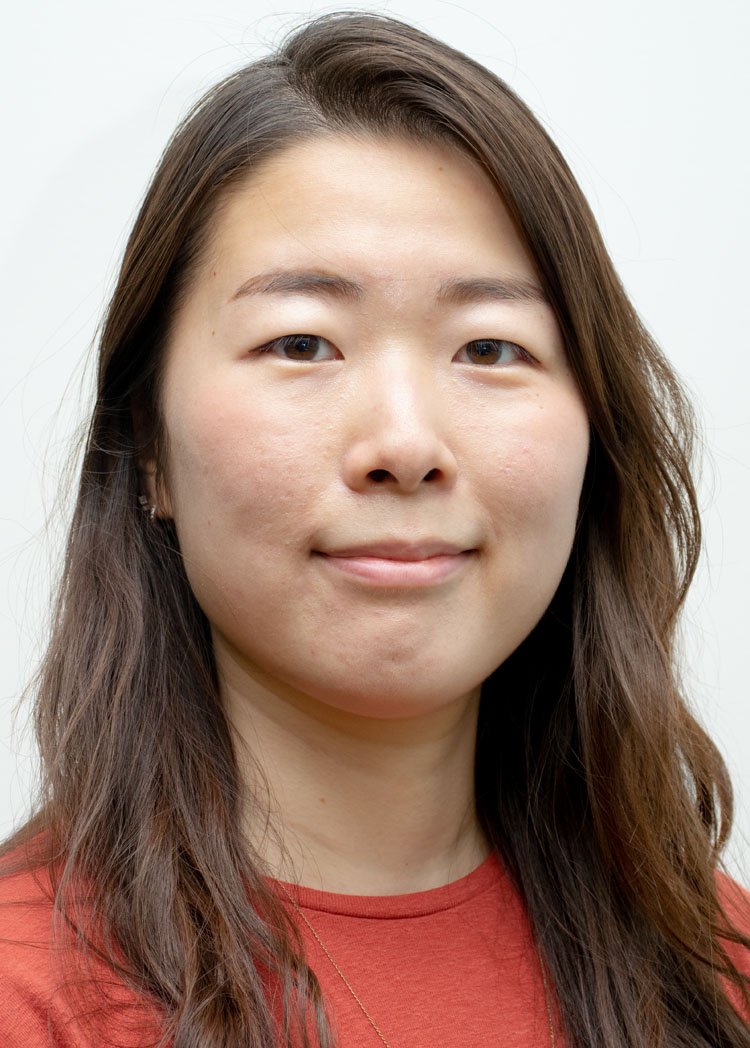
Email: joo00015@umn.edu
Advisor: Mike Farrar
Year entered: 2021
Undergraduate Institution: Macalester College
Research:
Sylvia Klein
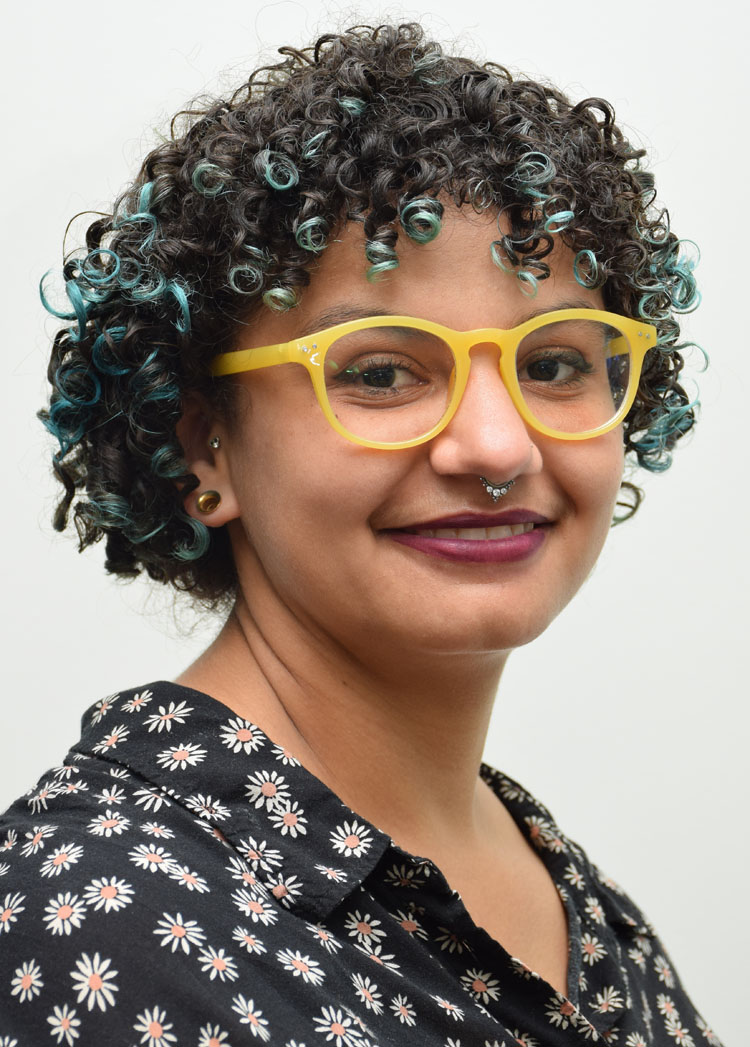
Email: klei0916@umn.edu
Advisor: Matt Aliota
Year entered: 2021
Undergraduate Institution: St. Mary's College
Research:
My research focuses on the role of the cGAS-STING pathway in the immune response to Dengue infection and how these interactions differ between host species. The end goal of this project is to generate a humanized STING transgenic mouse model that will be a better model for Dengue virus than the existing animal models.
Anders Lindstedt
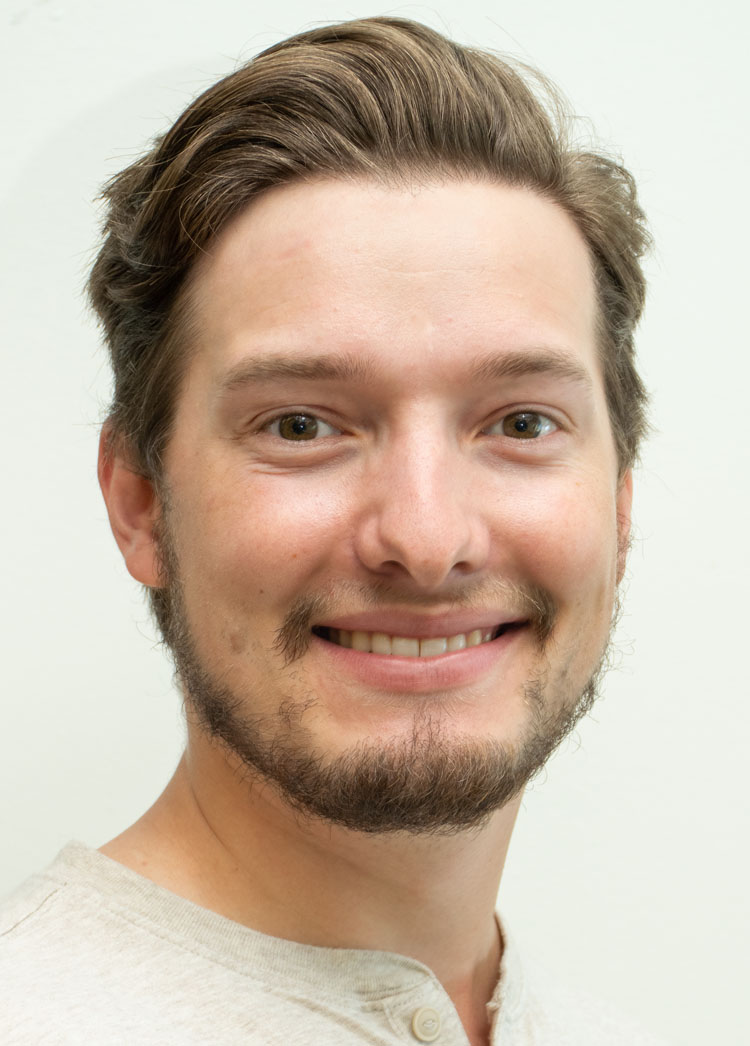
View Anders' MD/PhD student profile here.
Nicole Marquez Reyes
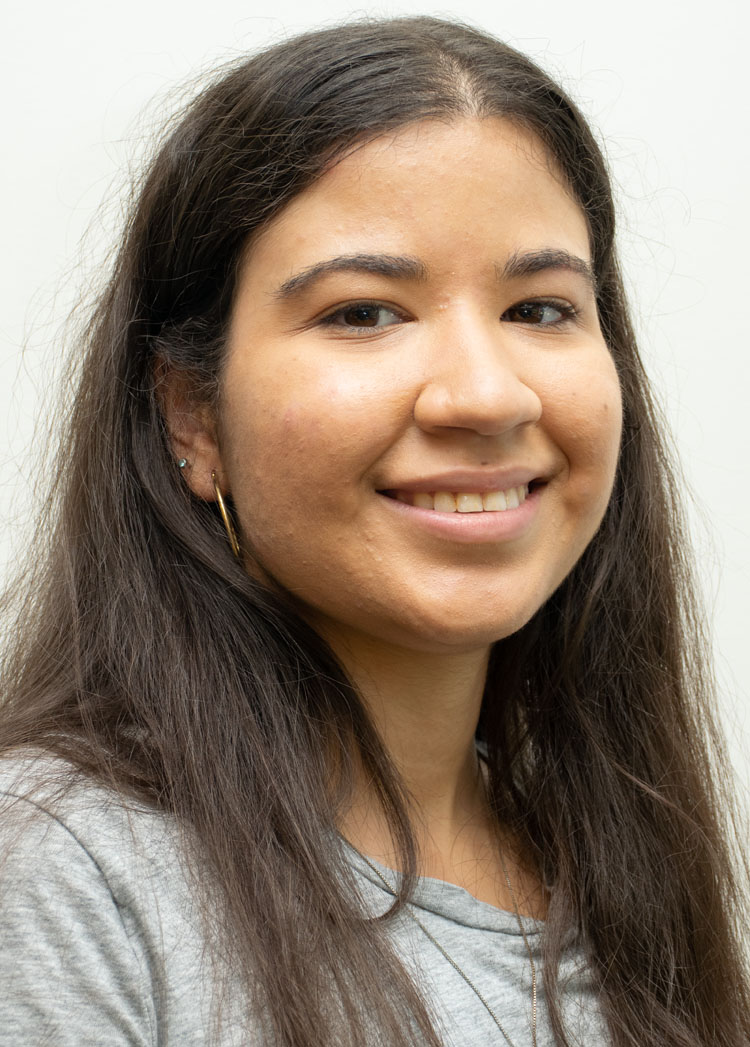
Email: mrque001@umn.edu
Advisor: Kathryn Fixen
Year entered: 2021
Undergraduate Institution: University of Puerto Rico, Cayey
Research: Rhodopseudomonas palustris is an anoxygenic phototroph that is metabolically versatile. Being able to switch between different modes of metabolism allows for its commercial and industrial application (ex. biodegradation of aromatic compounds from industrial waste; the production of H2 as a by-product of N2 fixation by the enzyme nitrogenase). Recently, a family of nitrogenase-like enzymes called Methylthio-alkane Reductases (Mar), has been a focus of study. In order to make methionine (an important amino acid), Mar enzymes utilize methyl-thio ethanol (MT-EtOH) as a sulfur source, and while it does this, it produces ethylene as a by-product. Ethylene is a volatile organic sulfur compound that has been described to have an effect in soil environments and climate. This compound is an important phytohormone, helping plants handle certain stresses such as pathogens. Other applications of ethylene are that the compound is a precursor to plastics. Additionally, ethylene in its oxidized form is a potent carcinogen. Some bacteria found in the soil or gut microbiome have at least one Mar enzyme, while R. palustris has multiple. The focus for my Ph.D. is to further characterize R. palustris’ Mar isozymes and how they contribute to ethylene production and sulfur-cycling, utilizing genetic and physiological approaches. Additionally, since R. palustris has multiple Mar enzymes, we want to further study and test the hypothesis of these different Mar variants potentially utilizing different metal cofactors similar to the nitrogenase enzymes.
Richard Martinez
Degrees received: Colorado State University
Research:
Cystic Fibrosis is a genetic disorder that affects ~70,000 people worldwide. This disease is caused by mutations in the cystic fibrosis transmembrane conductance regulator (CFTR) and is characterized by the accumulation of thick, sticky mucus in the lower respiratory airways. This accumulation allows for chronic microbial colonization and infection of the lungs leading to a decreased lifespan. By studying this microbial colonization and its dynamic interplay within itself as well as with the host, I aim to elucidate what role bacteria are playing as major pathogens in this disease as well as the role of the host immune response.
Tailor Mathes
Degrees received: University of Michigan, Ann Arbor
Research: My research is focused on investigating innate immunity to Mycobacterium tuberculosis (Mtb) infection focusing on myeloid cell populations. Utilizing mouse models, single cell RNA sequencing, and fluorescent/barcode labeled Mtb strains, I aim to elucidate different cell phenotypes between infected and bystander populations. I also have interests in investigating the mycobacterial genetic requirements for surviving the macrophage response.
Tristan Neal

Email: neal0232@umn.edu
Advisor: Ryan Langlois
Year entered: 2021
Undergraduate Institution: Arizona State Univ. of Tempe
Research:
Currently my research is focused on evaluating the zoonotic potential of RNA viruses. More specifically, we are using transfection with positive sense viral RNA genomes to bypass entry and uncoating in order to directly study intracellular host restrictions on viral genome transcription and replication. To achieve this, we are in vitro transcribing a variety of RNA virus genomes from viral rescue systems and chemically transfecting them across a diverse selection of mammalian primary fibroblast cells.
Stephen (Buck) O'Flanagan
Degrees received: Bethel University, MN
Reasearch:
Tissue resident memory T cells (T RM ) patrol peripheral tissues without recirculating through blood or lymph and play a critical role in front-line protection from viral infections. Recently, the Masopust lab reported the existence of bona fide lymph node resident memory T cells (LN T RM ). Although LN T RM may constitute a significant proportion of memory T cells in human lymph nodes, their function is entirely unknown. My research aims to define the ontogeny, fate, and function of LN T RM . I will investigate the specific contributions of LN T RM to lymph node immunosurveillance, local viral clearance, and orchestration of memory immune responses.
Elizabeth Okafor
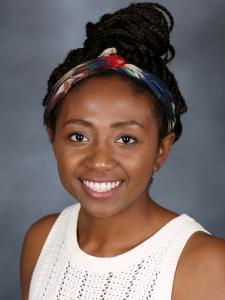
View Elizabeth's MD/PhD student profile here.
Kevin Osum
Degrees received: B.S., University of Wisconsin, Stout-Menomonie, WI, 2013
Research:
My research is focused around the idea of anergy in CD4+ T cells. Anergy is a functional unresponsiveness that results from incomplete or altered activation signals. My goals are to find the peptides that are driving CD4+ T cells to become anergic, and characterize their role in infection and autoimmunity.
Jesenia Perez
Degrees received: Florida International University
Research: Title: Molecular mechanisms of PARP inhibitor sensitivity in ovarian cancer
Ovarian cancer continues to be the most lethal gynecologic malignancy in the US, with High Grade Serous Ovarian Cancer (HGSOC) being the most common and most lethal subtype of cancer. Germline deleterious mutations in BRCA1 and BRCA2 are associated with carcinogenesis, are involved in contributing to homologous recombination dysfunction, and can be therapeutically exploited using PARP inhibitors. Despite the synthetic lethal action of PARP inhibitors on BRCA1/2 mutated cancers, drug resistance develops and the majority of patients relapse. In addition, the precise role of PARP inhibition on wild-type BRCA1/2 HGSOCs is unclear, warranting further study on the mechanism of action in ovarian cancers with different genomic backgrounds. The goal of my research is to study the molecular mechanisms of PARP inhibition in HGSOCs containing BRCA1/2 mutations and comparing these responses to wild-type BRCA1/2 ovarian cancers. By studying the differential responses that HGSOCs have on PARP inhibition at the level of the proteome, we can ascertain which type of HGSOCs would benefit most with PARP inhibition with minimal risk of relapse. Finally, studying changes in the proteome upon PARP inhibition will reveal other sets of genes besides BRCA1/2 that are involved in homologous recombination dysfunction.
Mary Piaskowski
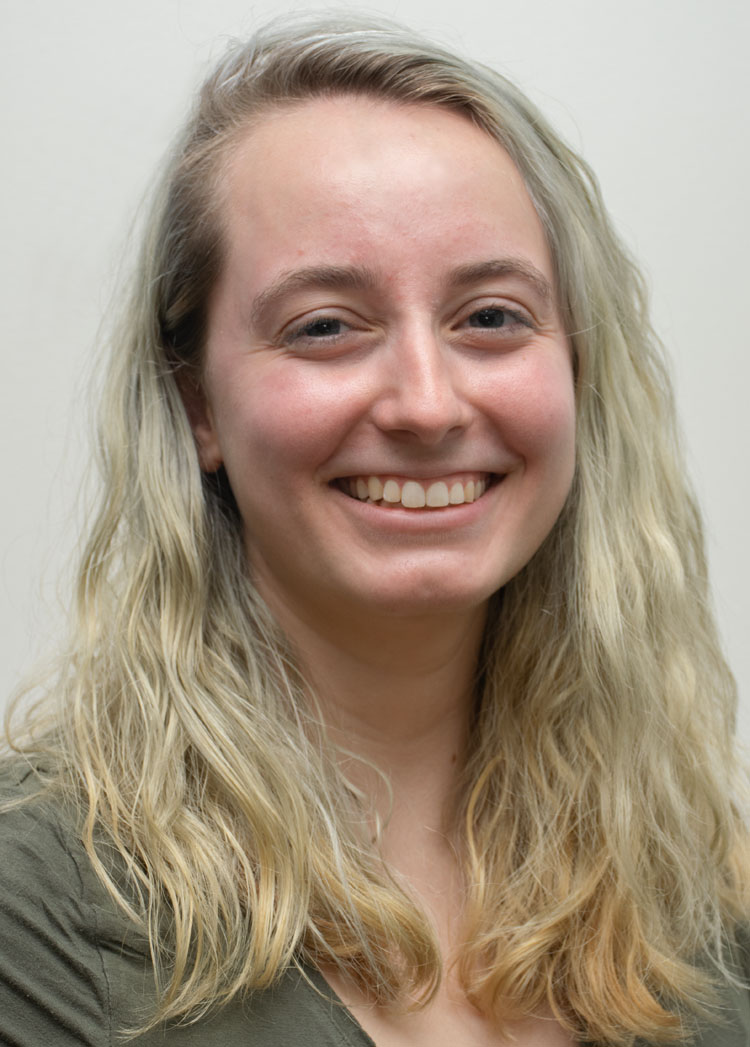
Email: piask003@umn.edu
Advisor: Roberta O'Connor
Year entered: 2021
Undergraduate Institution: Marshall University
Research: Apicomplexan parasites cause disease in both humans and domesticated animals with potentially devastating impacts. Treatments targeting such infections are lacking. Two examples being Toxoplasma gondii, which is capable of establishing an untreatable latent infection in all warm-blooded animals, and Cryptosporidium parvum which is a common cause of childhood diarrhea worldwide, and the single drug used to treat it is inadequately effective. Naturally derived compounds have long been a source of antimicrobial drugs. Recent research has turned to searching for antiparasitic compounds from marine animals. My goal is to study the effects of some of these marine derived bioactive compounds on the apicomplexan parasites Cryptosporidium parvum and Toxoplasma gondii. To do this, I am assessing efficacy against infection and identifying drug targets through molecular biology techniques.
Foster Powers
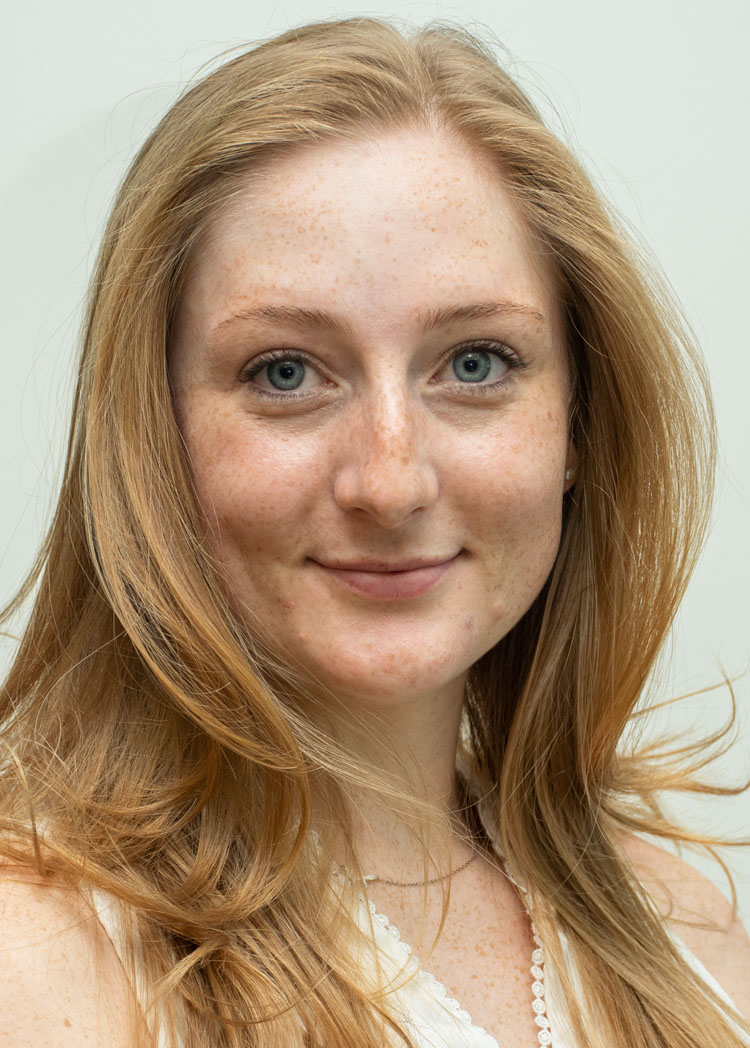
Email: power657@umn.edu
Advisor: Tyler Bold
Year entered: 2021
Undergraduate Institution: University of Arizona
Research:
I am exploring T cell specificity in the context of Mycobacterium tuberculosis infection. This includes their interactions with antigen presenting cells and characterization of these T cells throughout the course of TB infection. I will be using in vivo (murine) methods as well as analysis techniques such as single cell RNA/TCR sequencing and PIC-sequencing to in an effort to understand how antigen specificity may contribute to or direct T cell phenotype and activation.
Dira Putri
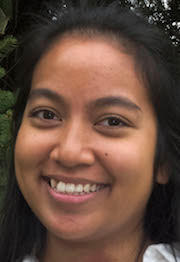
Email: dputri@umn.edu
Thesis Advisor: Ryan Langlois
Year entered: 2019
Degrees received: California State University, Long Beach
Research:
My thesis research focuses in two different areas: virus transmission and evolution, as well as viral immunology. The virus transmission and evolution project is aimed to understand the genetic diversity of circulating viruses in order to identify the process of spillover transmission. For my viral immunology project, I sought to identify the mechanisms that permit some lung epithelial cells to survive influenza infection in the presence of innate immune response.
Tyler Rollman
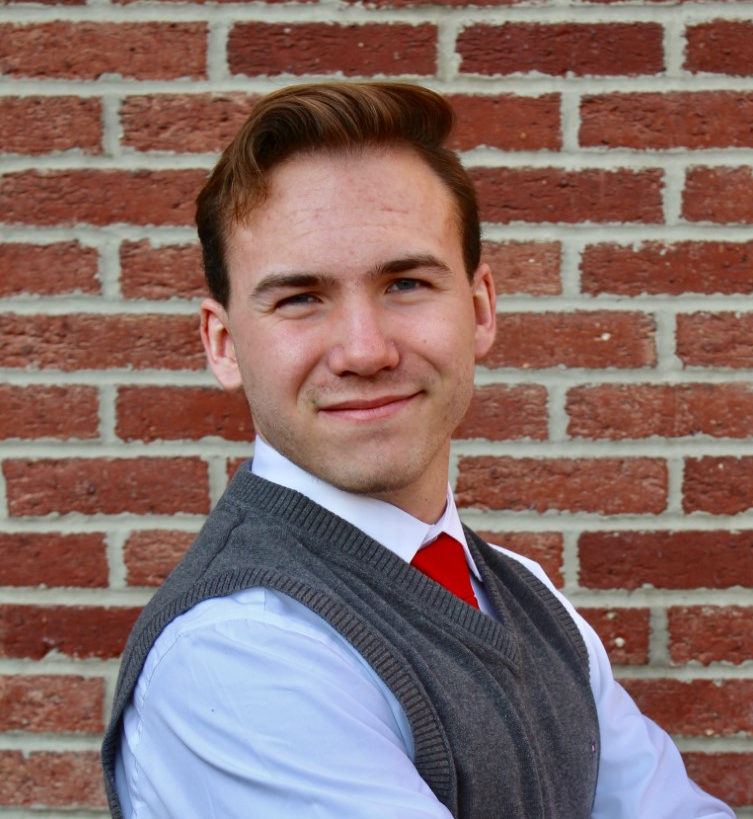
Degrees received: Creighton University
Research:
Susan Schmidt
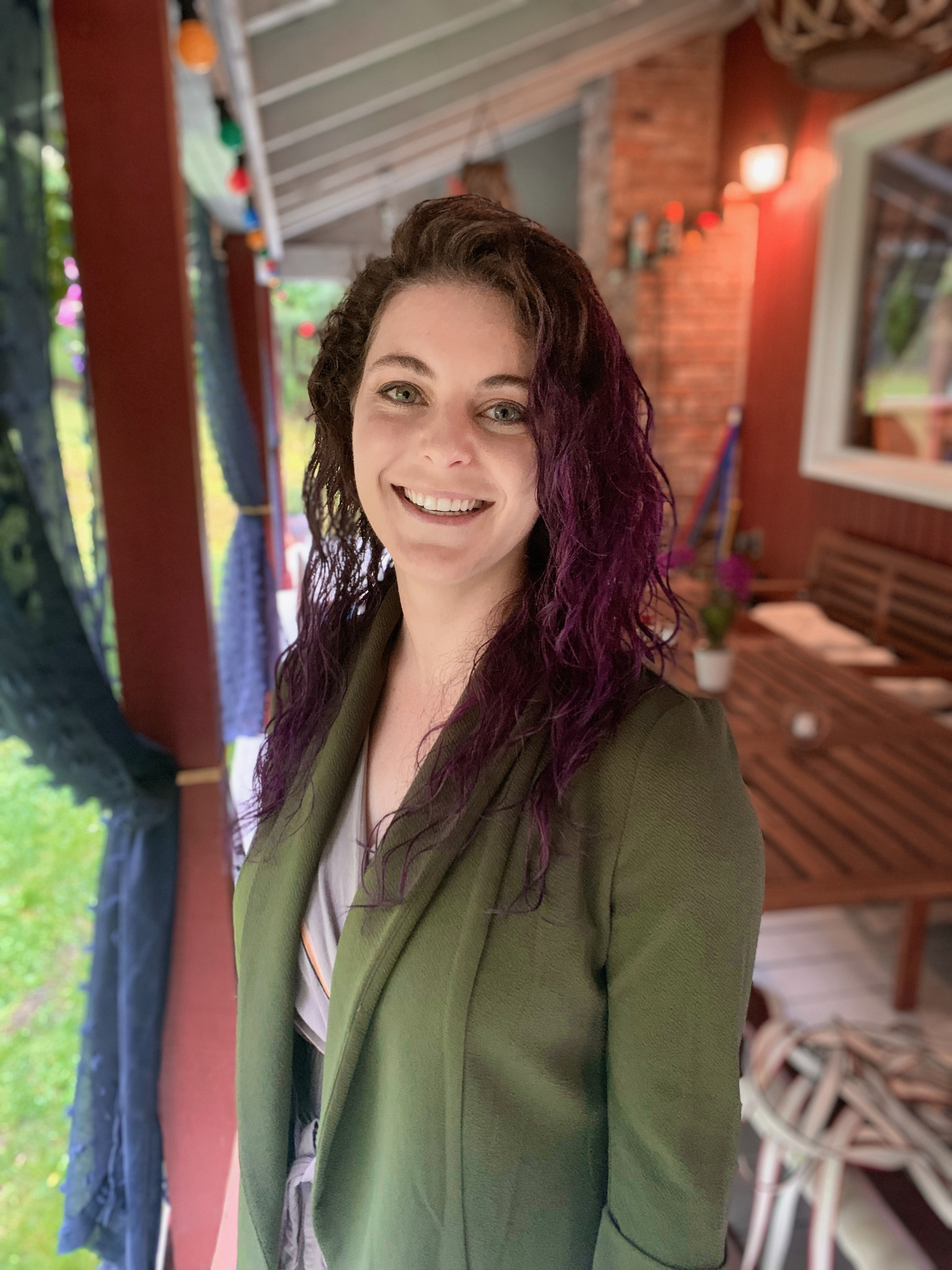
Degrees received: University of Wyoming
Research: I am working to understand the role of steroid hormone receptor signaling (estrogen receptor, ER, and the progesterone receptor, PR) in luminal (ER+) breast cancer (BC) that has acquired both endocrine resistance and endothelial to mesenchymal transition. Specifically, elucidating the signaling events that lead to expansion of a subpopulation of CD44high/CD24low cancer cells, circulating stem cell (CSC) like cells, within endocrine resistant BC. In previous models, ER is thought to be down regulated in endocrine resistance; yet PR, (which is induced by ER), exhibits increased transcriptional activity. To understand what is driving these signaling events leading to a CSC phenotype, I am creating new models of endocrine resistance in multiple cell lines and comparing the signaling components in 2D versus 3D tissue culture conditions. Additionally, these TC models will be expanded to mouse models for in vivo characterization. Learning more about the roles of ER and PR in driving the stem cell-like subpopulation within BC resistance will provide insight into mechanisms of cancer cell plasticity and possible reversal of endocrine resistance.
Zoe Schmiechen

Email: schm5267@umn.edu
Thesis Advisor: Ingunn Stromnes
Year entered: 2019
Degrees received: Grinnell College
Research:
Tumor cell loss of MHC class I remains is a critical barrier to successful immunotherapy. The goal of my research is to understand immune evasion of pancreatic ductal adenocarcinoma (PDA) and identify immune cell populations that either promote tumorigenesis or are critical for the anti-tumor immune response in MHC class I loss variants. Specifically, using an orthotopic model of
PDA that expresses the click beetle neoantigen I will investigate how loss of MHC class I expression causes tumor escape and an unsuccessful immune response. Moreover, I hope to identify therapeutically targetable immune cells and pathways that can be leveraged to induce disease remission in MHC class I loss variants of PDA.
Milcah Scott
Degrees received: B.S., University of Minnesota, Twin Cities, Minneapolis, MN, 2008
Research:
Tissue-resident memory CD4+ and CD8+ T cells (TRM) have been identified in many tissues and organs of mice and humans. TRM reside in barrier (e.g., skin, gut, and lung) and non-barrier tissues (e.g., pancreas, kidney, liver, brain, and SLOs). TRM are the dominant T cell population involved in immunosurveillance of most organs and upon activation they are capable of in-situ proliferation, producing proinflammatory cytokines, recruiting circulating memory cells and B cells, as well as other functions. These abilities make TRM important players in monitoring and protecting the tissues they occupy from infection and cancer. Recently, there is an increasing awareness that they also likely promote unfavorable responses such as inflammatory diseases, transplant rejection, allergy, and autoimmune diseases that include inflammatory bowel disease, vitiligo, and multiple sclerosis. If TRM do have a prominent role in immunopathology, elimination of TRM in affected tissues may reduce levels of inflammation and close those tissues to routine immune surveillance, allowing for durable remission. My research project is focused on understanding how tissue-resident memory T-cell populations are generated and maintained in peripheral tissues and in developing depletion strategies explicitly targeted against tissue-resident memory T-cell populations. Depletion strategies can be tested in relevant autoimmune and allergic mouse models as well as transplant models in both clean and dirty mice, and will also help elucidate tissue-specific mechanisms of T cell recruitment, retention, and homeostasis.
Olivia Smith
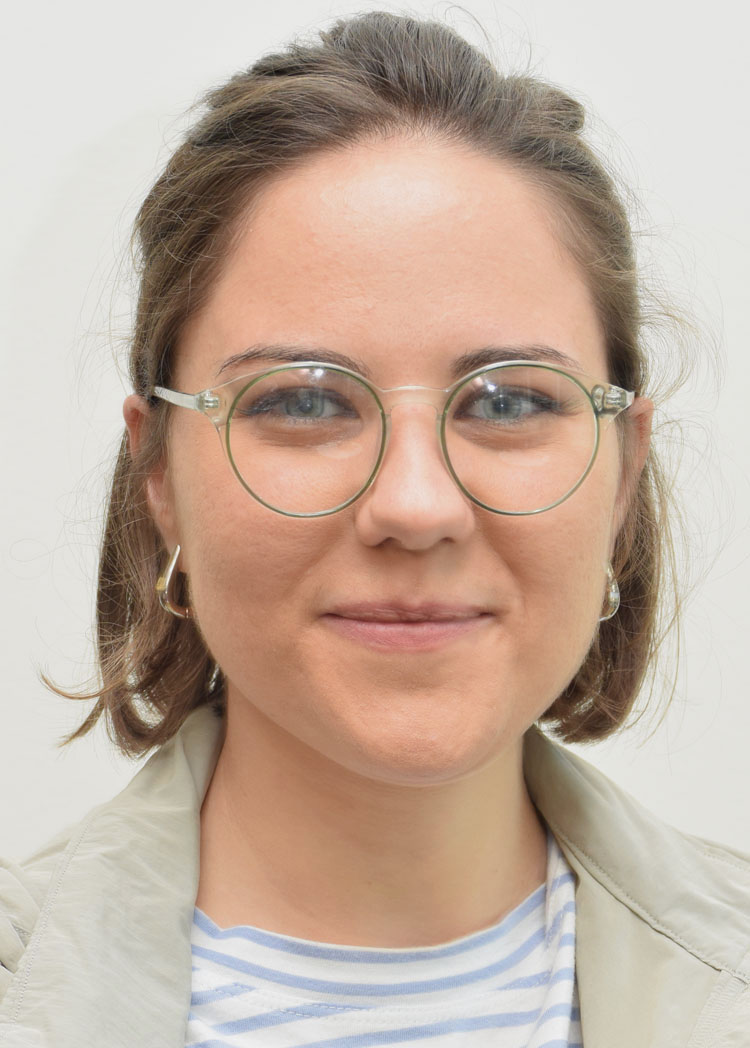
View Olivia's MD/PhD profile here.
Claire Thefaine
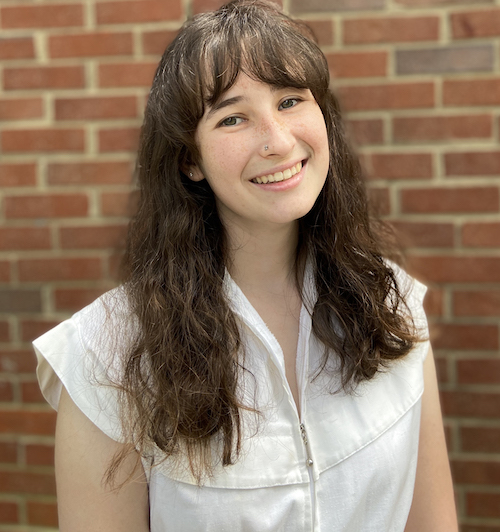
Degrees received: University of North Carolina, Chapel Hill
Research:
Memory CD8 T cells provide us with long-term protection against reinfection by intracellular pathogens. The CD8 T cells memory pool is heterogenous; our group has recently defined a rare circulating subset known as long-lived effector cells (LLECs) which are characterized by their expression of KLRG1 and superior control of LM. Months after infection in SPF mice, the LLEC population wanes in comparison to other subsets. However, this does not seem to be the case in “dirty mice,” which have higher systemic pro-inflammatory cytokine levels. My work centers around the hypothesis that LLECs are uniquely able to utilize pro-inflammatory cytokines such as IL-18 for their maintenance.
Jose Valentin Lopez
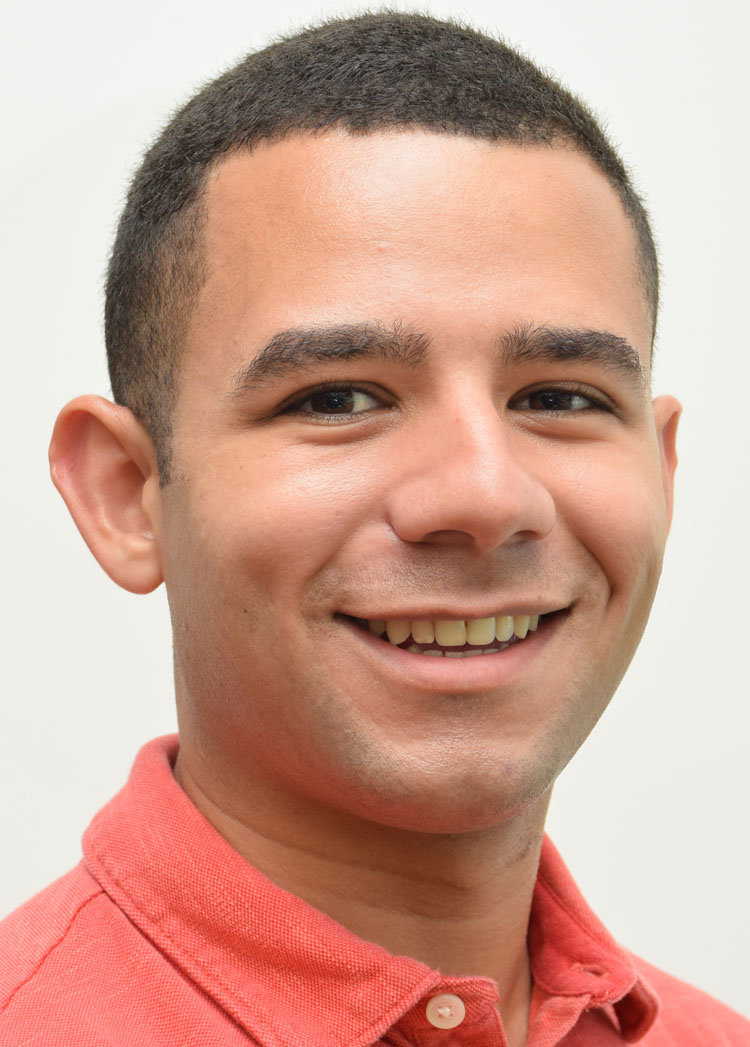
View Jose's MD/PhD profile here.
Sarah Wall
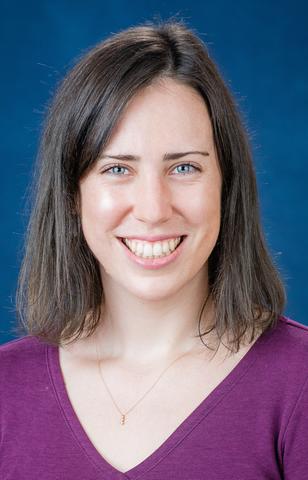
View Sarah's MD/PhD student profile here.
